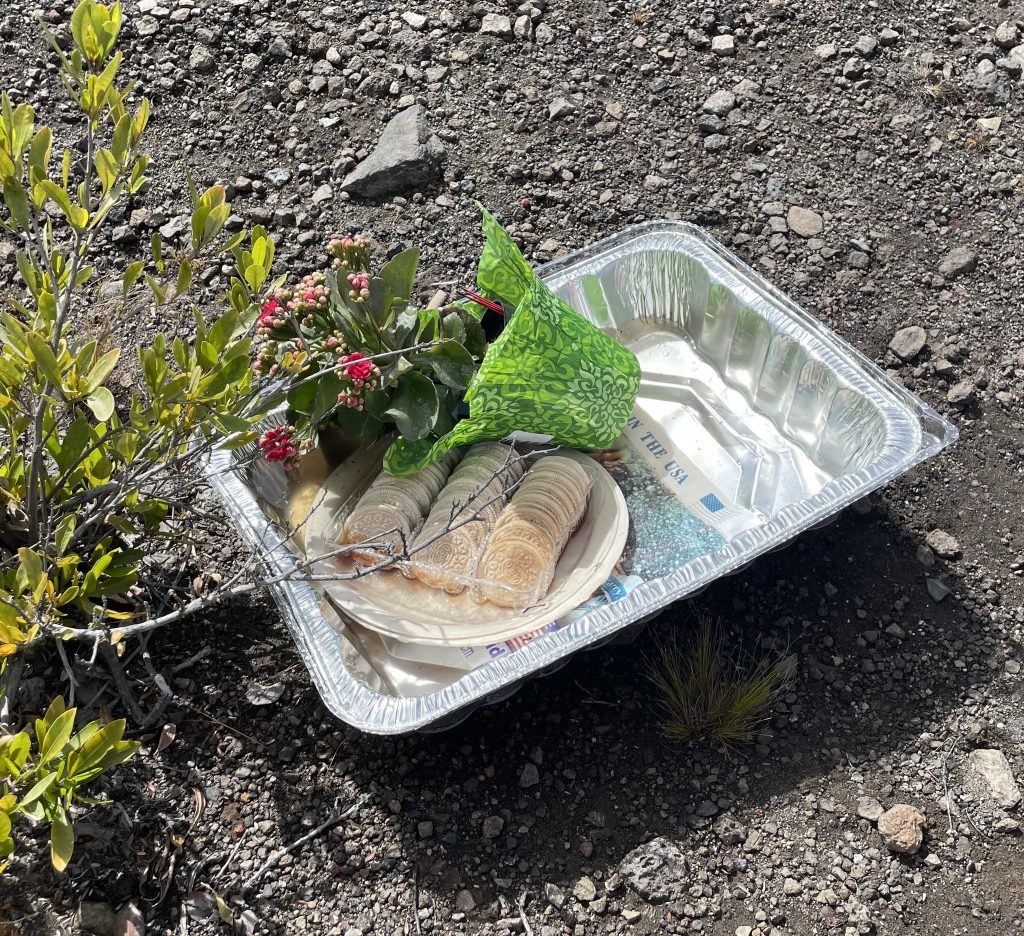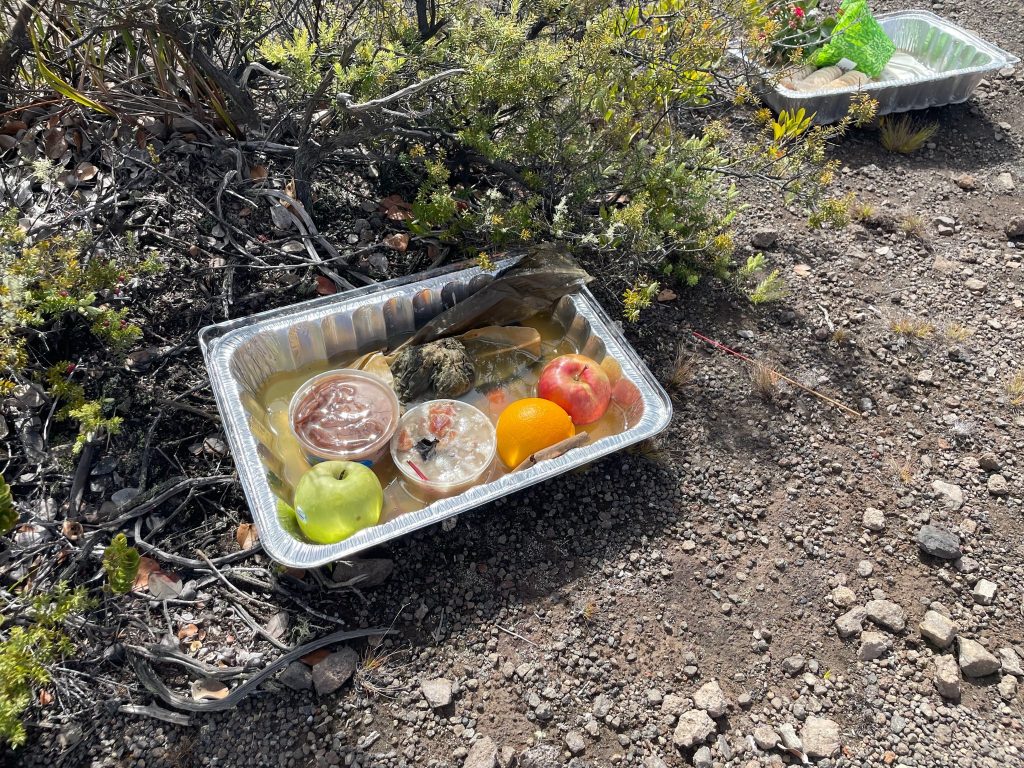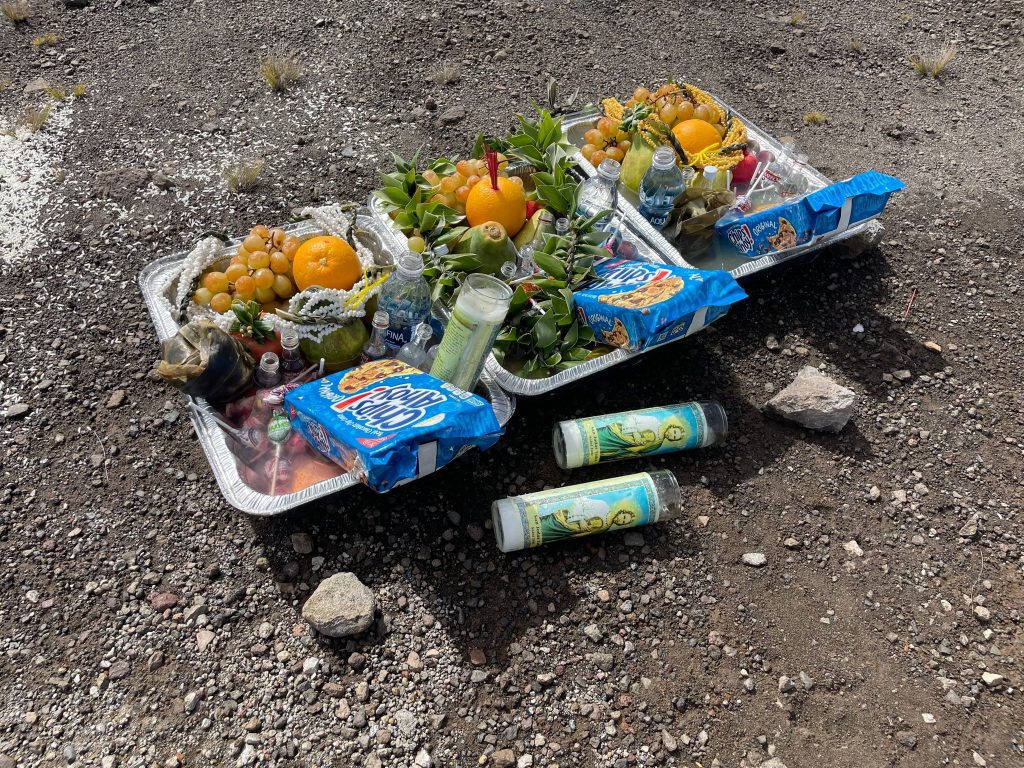Chips Ahoy, incense candles, fruit left as offerings at Kīlauea summit
Recent visitors to Kaluapele, the summit area of Kīlauea, have left behind roasting pans filled with meat, poke to unopened packages of Chips Ahoy cookies, fruit, candy bars and burning incense sticks.
Officials from Hawai‘i Volcanoes National Park say they’ve been left as offerings to pay respects to Pelehonuamea, the elemental deity of volcanism and creation. However, these non-traditional items are attracting pests.
“Things that don’t naturally belong in that space should not be a ho‘okupu (offering),” said Kumu Hula Huihui Kanahele-Mossman. “Ho‘okupu is not a ‘thank you.’ It’s not showing gratitude or any of that. It’s a recognition between you and the place or you and what you are visiting that you are present there in order to have an equal exchange between you and the place.”
Park officials say they’ve removed roasting pans filled with meat, poke (raw fish), poi (pounded taro), unopened packages of cookies, rotten fruit, candy bars, burning incense sticks, plastic-wrapped flowers and more.
“Although well-intentioned, these offerings harm the environment and detract from the natural beauty of Kīlauea,” park officials wrote in a Facebook post. “These offerings attract, or could introduce, non-native invasive species to the park, including fire ants, coqui frogs, mongoose and rats.”
Native Hawaiians have honored deities at Kīlauea for centuries, and many express their reverence with hoʻokupu (offerings), personal pule (prayer), or oli (chants) to Pele. Offerings can be as simple as a lei or plant.

“It (ho‘okupu) can be anything that creates growth for that place,” Mossman said in the video.
Mossman said a good ho‘okupu is a hula for those who are experienced. Another could be a mele (song or chant) that you created or has something to do with the place you’re at.
“If you’re giving ho‘okupu to a structure like a heiau (high place of worship) or if you’re giving ho‘okupu to a lele (sacrificial alter or stand) it can be in those things that come from that place, food that comes from that place,” Mossman said.
Any of those things that it takes the giver an effort to make and create are worthy ho‘okupu, Mossman said.
“If you don’t have that accurate definition of ho‘okupu, you shouldn’t be giving ho‘okupu,” the kumu added.
Park officials ask the public visiting Kaluapele to respect Native Hawaiian culture, the ‘āina, and our hard-working staff, and refrain from leaving items behind in Hawai’i Volcanoes National Park.
Click here to learn more about ho‘okupu.












